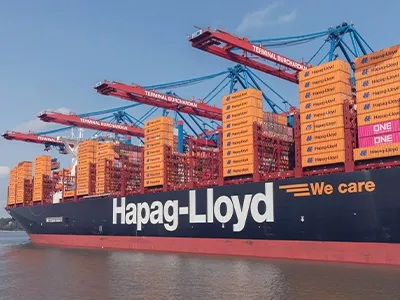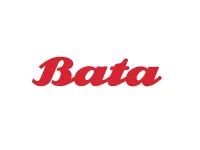


The management of a planning process for the supply chain, from sales and purchasing to stock and margins, integrated with the economic-financial area, had become a necessity for Compar; SDG, together with our internal team, assisted us from the process mapping stage right through to the implementation of the support solution. Together, we are now introducing the new models and solutions in the organisation which, for Bata, represent a new and efficient support for a more detailed planning of business goals and a more accurate analysis of variations and definition of possible alternative scenarios. Silvia Meneghini, Head of Controlling Compar Spa
Compar S.p.A., based in Limena (Padua, Italy), is an Italian company in the international Bata Group and has been since 1931. Bolstered by a constant growth trend, Compar has managed to gain a leading position on the Italian domestic footwear and clothing market thanks to its sales structure, with a dense network of outlets all over Italy, now totaling more than 400.
Its continuous expansion policy has been sustained by the doubling of sales volumes and the doubling of the number of people involved in the organization (about 350 employees) over the last five years.
In regards to its sales structure, Compar has diversified its growth strategy by developing both direct sales and franchising channels. To be noted here is the constantly increasing size of the franchising channel (about 25%): this has led to an acceleration in business dynamics, in parallel with the greater organizational complexity involved in the management of an indirect channel. This dynamism is linked to the Compar value proposition, represented by the confirmation of the Bata brand in the context of customer fidelization based on the formulae offered in the group's different outlet chains: Bata City, Bata Superstore, Bata Factory Store, and, finally, Athletes World.
The Bata City chain is characterized by prestige city locations with products in a higher price range. Bata Superstores focus on the bigger volumes generated by an across-the-board product range and locations in shopping malls. Bata Factory targets nuclear family customers with an economical product range. Finally, the Athletes World chain targets young customers receptive to the trends set by the major worldwide brands.
The growing organizational complexity of Compar S.p.A. is linked also to its leading role within the Bata group. Bata is the biggest global footwear manufacturer and retailer and is present all over the world with a dense network of over 4,600 direct sales outlets and over 50,000 staff in more than 50 countries, serving more than a million customers a day.
In the context of an increasingly competitive market (due especially to the vitality of China and India) and rapidly evolving customer behavior patterns, the Bata management has singled out a series of priorities for effectively supporting the company's growth strategy.
Translating strategic choices into operational terms and assessing how much the targets set by these choices are being achieved quantitatively and qualitatively suggests a rethinking of business planning and control methods in a context closely related to the actual processes. A decisive factor in this is the organizational impact, which is why the people and activities involved must be effectively coordinated and aligned in a common direction of development.
Given the area that Compar operates in, the natural cornerstone of all this would seem to be the business process: what and how much to buy from suppliers, what times and criteria to apply when distributing the goods to the sales outlets with a view to meeting customers' needs in the most effective way and what policies to adopt to maximize sales in order to maintain a sufficiently high level of stock rotation. The process cuts across many company areas is characterized by a high degree of complexity and its component activities are highly asynchronous.
In the light of these factors, the need arises to adopt models and technological tools capable of managing the process in its entirety: simulation on the basis of different hypotheses, planning according to multiple directives and at distinct moments, analyses of results obtained and related variances, sharing knowledge and coordinating the actions to be taken. All this must necessarily be integrated with the structure of the company management IT systems (these too, therefore, needing to be redesigned) without restricting operational capacity.
The objective of the collaboration with SDG is to design and implement a new business planning model. Using a consolidated approach, the project team, made up of SDG consultants and the main process owners, concentrated its efforts in two directions.
The model developed is divided up in a supply chain-oriented pattern, in which all the activities in the chain procurement, distribution, sale combine to generate the objectives of the planning itself.
The planning of the turnover goals, the first step in the process, proceeds by means of two different strategies, aimed at balancing the mixture of past collections and new articles. In the first case, the performance achieved in previous periods sets a constraint in terms of available stock levels; furthermore, the sales potential decreases rapidly with the age of the merchandise. Using the lever of price cuts, the objective is to balance the need to reduce stock remainders against maintaining average profits. In the second case, the margins and the quantities sold are decided on the basis of the total turnover target. The quantities, values, and sales margins of the new merchandise determine the procurement budget and are therefore set with the involvement of the different buyers in the process.
The link between procurements and sales is the distribution activity, which connects the different merchandise categories to the sales outlets. The objective is to maximize selling effectiveness, differentiating the goods according to the size, clientele, location, and status of the individual sales outlet.
What is then planned for procurement and sales is the seasonality, taking into account the behavior patterns of customers and suppliers and setting the growth potential of the sales outlets and the positive sign of the sock remainders level as constraints.
The multiplicity of the available scenarios and the elasticity of being able to select different levels of detail make it possible to modulate the speed and accuracy of results in relation to the period and the recipients of the planning process. The management and control system have the task of making an initial forecast, on the basis of medium-long term signs; working at a highly aggregated level of detail (macro-category, chain, collection) makes it possible to focus attention on overall company performance and get results quickly. The translation of these objectives into operational terms involves the people in charge of the single activities and areas and proceeds with the information gradually becoming more detailed (sub-category, sales outlet, collection, age of goods, week, etc.). The management budget and operational plan are integrated within the same model and are made available via a single platform. The planning output, in terms of classes of information and size/structure, can be compared to actual concrete results. The analysis of the differences makes it possible to revise previously made estimates on future occasions and take corrective measures. In the event of an excessively pessimistic margin forecast, for example, it is possible to act on the age composition of the goods rather than on the buying margin in order to align the objective with the result when revising. Making the planning levers explicit facilitates the process of singling out the effects on the end result.
The adoption of an integrated business planning model has had an immediate effect on the way of running the company.
The definition and control of the essential levers have made it possible to map out a logical path for the formation of the target data and for pointing out any discrepancies between the needs of the actors involved in the same activity (e.g. managers of different BUs), rather than between those involved in different activities (such as sales manager and procurement manager). The flexibility of being able to choose what level of detail to use in the planning has made it possible to obtain reliable results quickly, results that can be discussed and approved by management and refined in a subsequent revision. For the same reasons, including performance analysis, it is easier to identify the causes that have generated certain results and to take the appropriate measures.
From the point of view of the basic control of the company, it should be stressed that the information output of the business planning, i.e. buying, sales, and stock remainders, constitutes the starting point for the economic-financial planning process, which can thus be developed on the basis of more reliable, shared results.
A number of different areas of development are defining themselves: